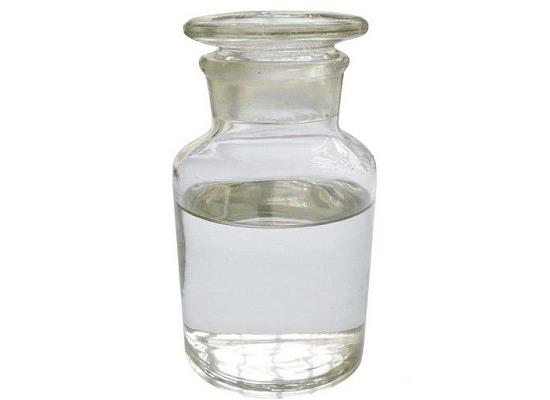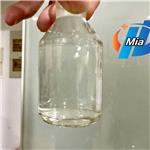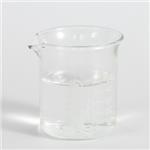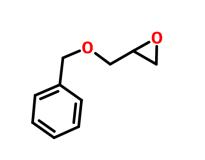Benzyl Glycidyl Ether: Synthesis Method and Bioresolution
General Description
Benzyl Glycidyl Ether is a versatile compound with unique chemical properties, making it valuable in various industrial applications. Its synthesis involves the reaction of epichlorohydrin with benzyl alcohol in the presence of specific catalysts, resulting in a high yield of the desired product. Bioresolution of Benzyl Glycidyl Ether using Bacillus alcalophilus cells allows for the production of enantiomerically enriched products through carefully controlled culture conditions. Factors such as the age of bacterial cells, nitrogen sources, and substrate concentrations significantly influence the enantioselectivity of the synthesized compounds. By optimizing these parameters, the production of enantiomerically enriched Benzyl Glycidyl Ether and its diol can be achieved successfully. Overall, the bioresolution process offers an effective biotransformation technique for producing enantiomerically enriched Benzyl Glycidyl Ether and its corresponding diol within specific culture conditions and timeframes.

Figure 1. Benzyl Glycidyl Ether
Overview
Benzyl Glycidyl Ether is a versatile organic compound that combines the benzyl group from benzene with the glycidyl moiety, offering unique chemical properties suitable for diverse industrial applications. Known for its ability to participate in esterification and etherification reactions, Benzyl Glycidyl Ether stands out for its reactivity and versatility. With excellent stability and solubility characteristics, it can be easily incorporated into different formulations. Moreover, its low toxicity and environmentally friendly nature make it a preferred choice in the production of adhesives, coatings, and polymers. Overall, Benzyl Glycidyl Ether plays a crucial role in various industrial processes, providing a wide range of benefits due to its distinctive chemical structure and properties. 1
Synthesis Method
The synthesis of benzyl glycidyl ether involves the reaction of epichlorohydrin with benzyl alcohol in the presence of tetrabutylammonium hydrogen sulphate and aqueous NaOH. First, a mixture of epichlorohydrin, benzyl alcohol, and tetrabutylammonium hydrogen sulphate is added dropwise to 50% aqueous NaOH at 0°C. The reaction mixture is stirred for 30 minutes at the same temperature and then for an additional 4 hours. After that, the mixture is extracted with diethyl ether, and the ether layer is washed and dried before evaporation under reduced pressure. The resulting residue is purified by column chromatography on silica gel using a hexane:ether mixture as the eluent, leading to an overall yield of 65%. The final product obtained is 1,2-epoxy-3-(benzyloxy)propane. The synthesis process involves the nucleophilic substitution of benzyl alcohol with epichlorohydrin, resulting in the formation of benzyl glycidyl ether. The presence of tetrabutylammonium hydrogen sulphate likely acts as a phase-transfer catalyst to facilitate the reaction. The purification step by column chromatography helps isolate the desired product with high purity. 2
Bioresolution
The bioresolution of benzyl glycidyl ether using whole cells of Bacillus alcalophilus involves a series of steps to achieve enantiomerically enriched products. The process begins with the incubation of Bacillus alcalophilus cells in a mineral supplemented medium with specific carbon and nitrogen sources at a controlled pH and temperature. During the incubation, the cells kinetically resolve benzyl glycidyl ether into (S)-benzyl glycidyl ether and (R)-3-benzyloxypropane-1,2-diol with certain enantiomeric excess percentages. The optimization of culture conditions, such as the age of bacterial cells, nitrogen sources, concentration of tryptone, pH, and incubation temperature, plays a crucial role in enhancing the enantioselectivity of the bio-transformation process. The study reveals that factors like the age of bacterial cells, nitrogen sources, concentration of tryptone, pH, and incubation temperature significantly impact the enantioselectivity of the synthesized compounds. By carefully controlling these parameters, the production of enantiomerically enriched benzyl glycidyl ether and its diol can be optimized. Overall, the bioresolution process using Bacillus alcalophilus cells provides a successful biotransformation technique for producing enantiomerically enriched benzyl glycidyl ether and its corresponding diol. The optimized protocol involves specific culture conditions and substrate concentrations to achieve desired enantiomeric excess levels within a defined timeframe. 3
Reference
1. Benzyl glycidyl ether. National Center for Biotechnology Information. 2024; PubChem Compound Summary for CID 94247.
2. Takano S. Practical preparation of optically active O-benzylglycidol from optically active epichlorohydrin. Heterocycles. 1990; 31(1): 1715-1719.
3. Bala N, Kaur K, Chimni SS, Saini HS, Kanwar SS. Bioresolution of benzyl glycidyl ether using whole cells of Bacillus alcalophilus. J Basic Microbiol. 2012; 52(4): 383-389.
);Related articles And Qustion
See also
Lastest Price from Benzyl Glycidyl Ether manufacturers

US $10.00/kg2024-04-23
- CAS:
- 89616-40-0
- Min. Order:
- 1kg
- Purity:
- 99.6%
- Supply Ability:
- 100000

US $1000.00/kgkg2023-12-11
- CAS:
- 89616-40-0
- Min. Order:
- 1kgkg
- Purity:
- 0.99
- Supply Ability:
- 100



